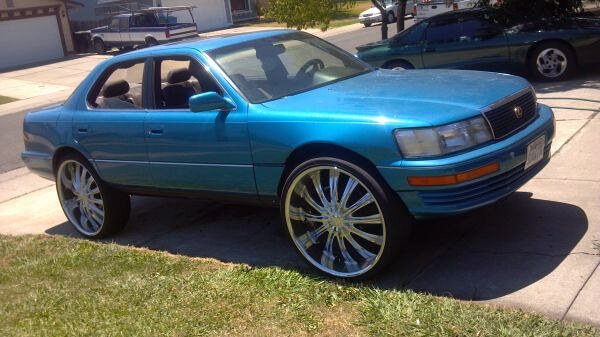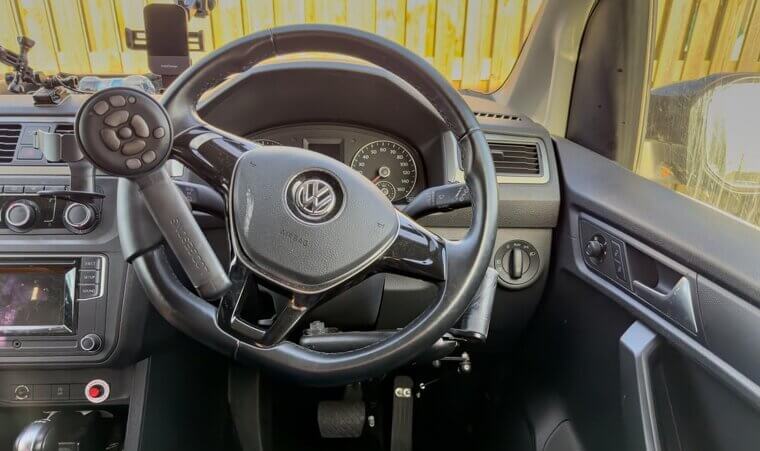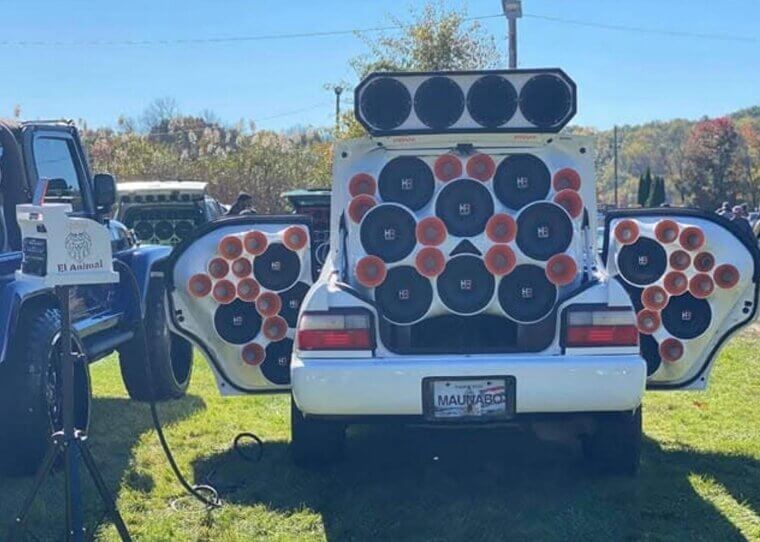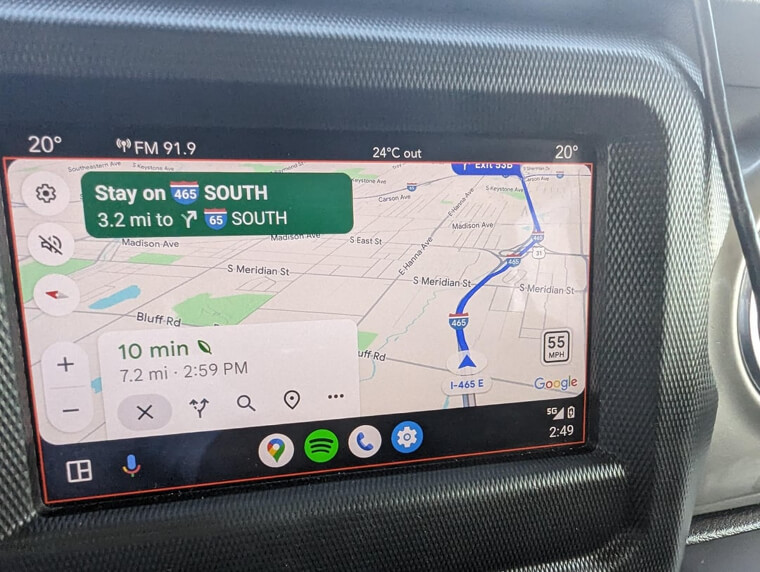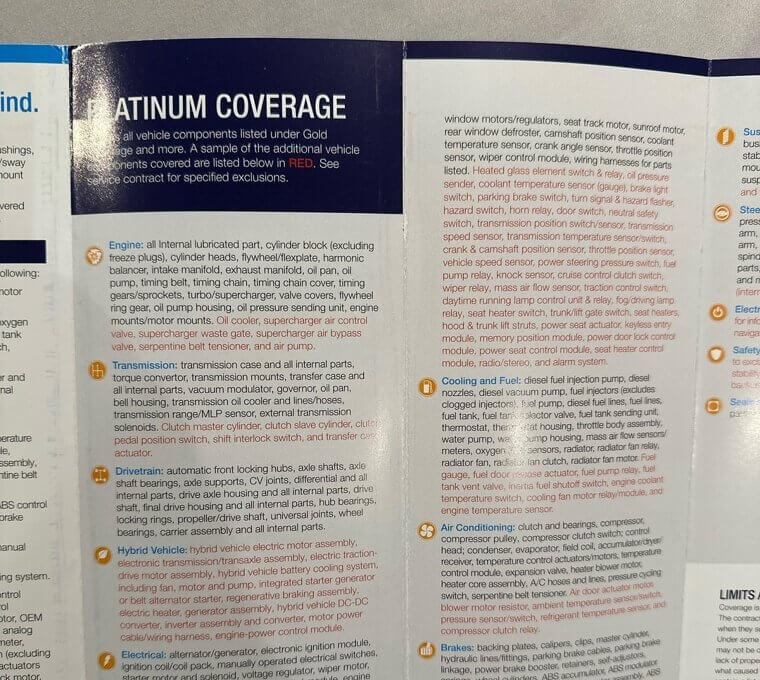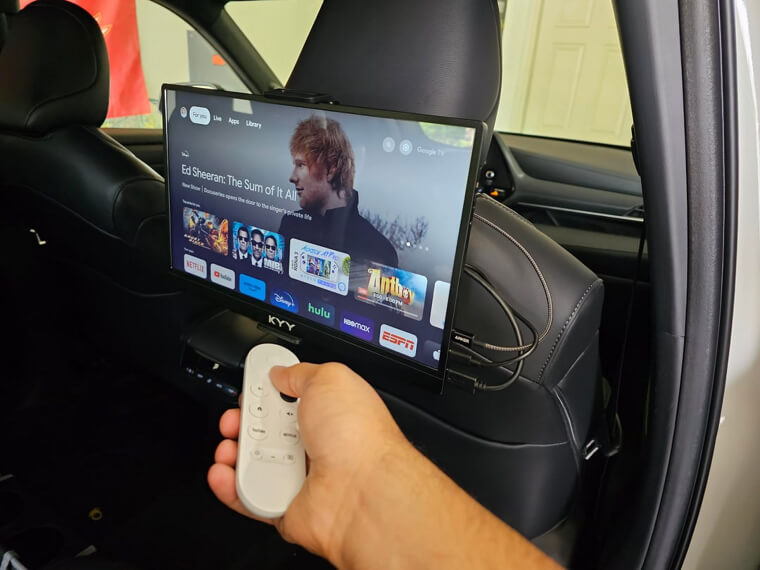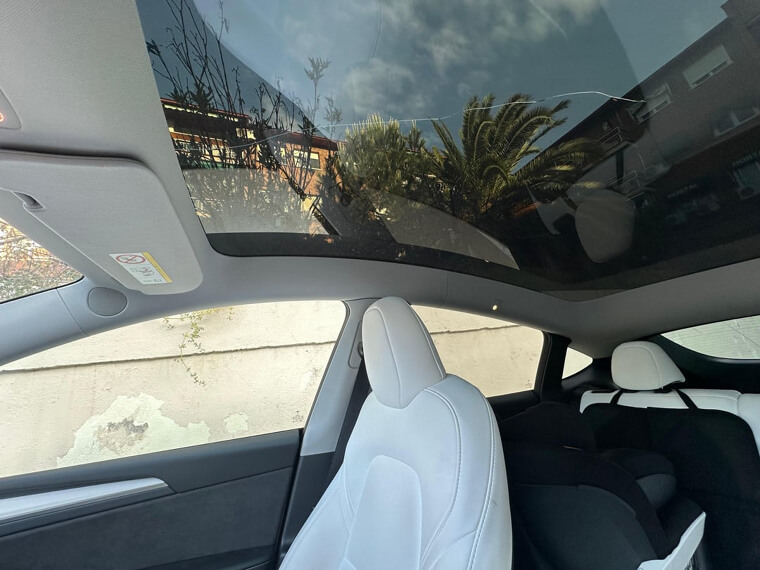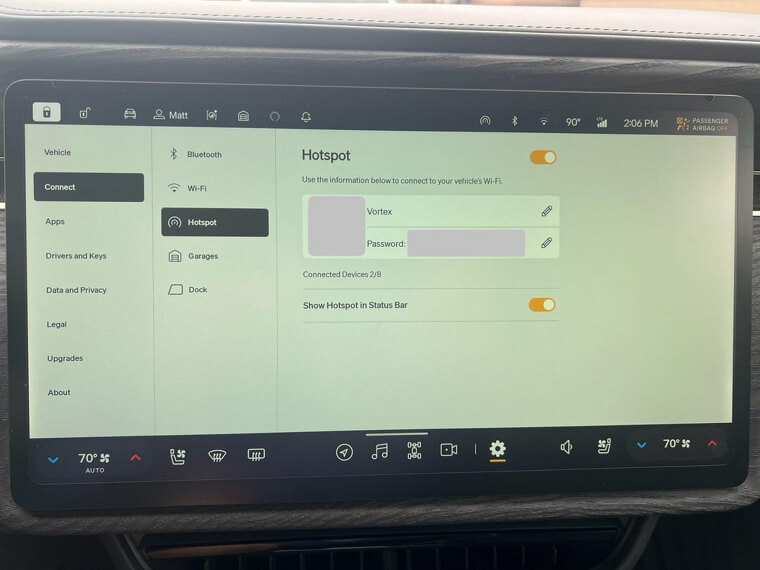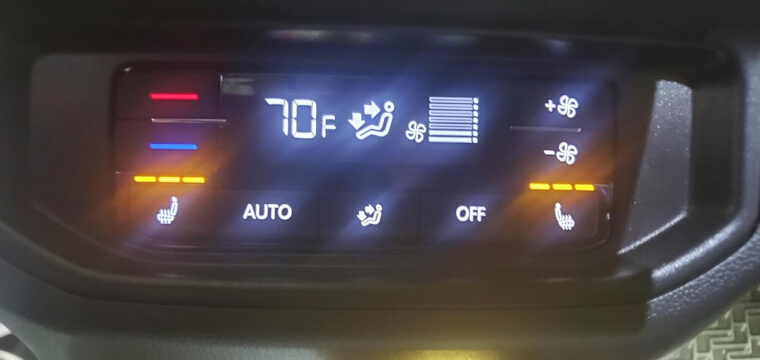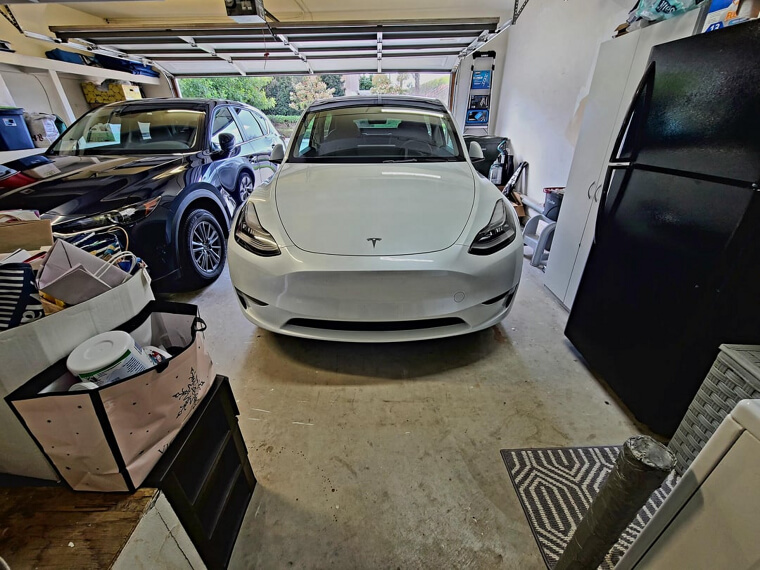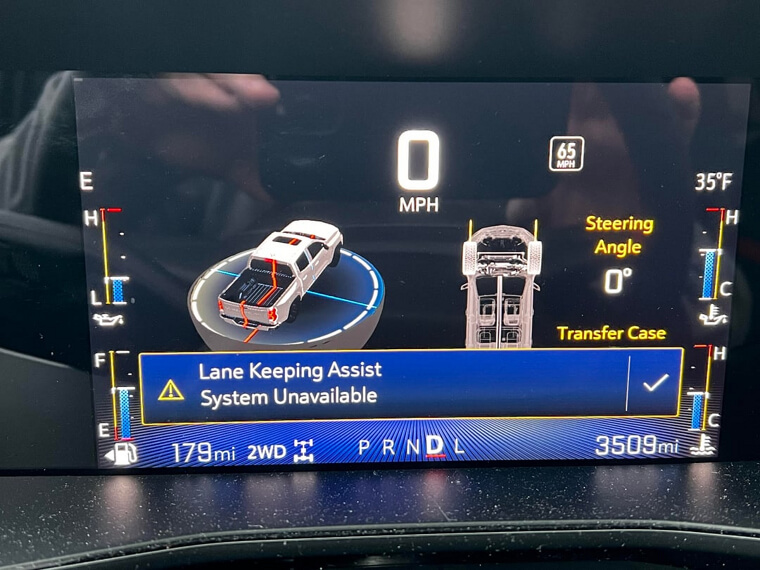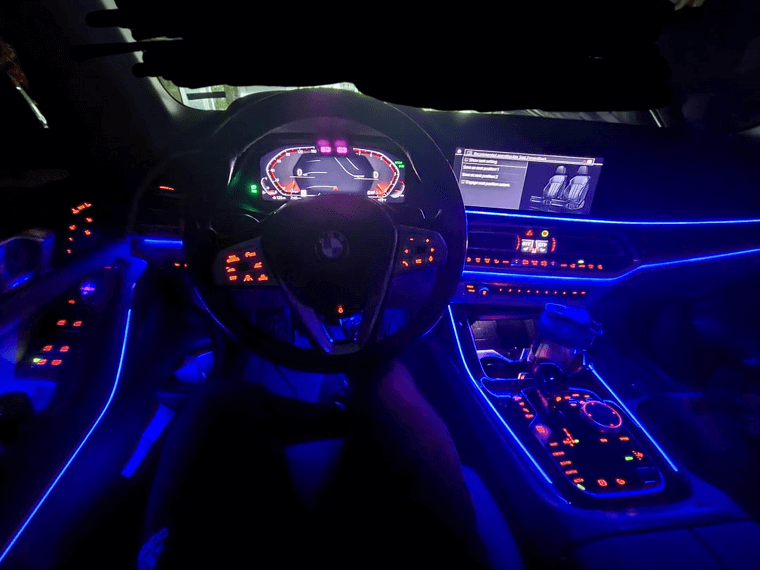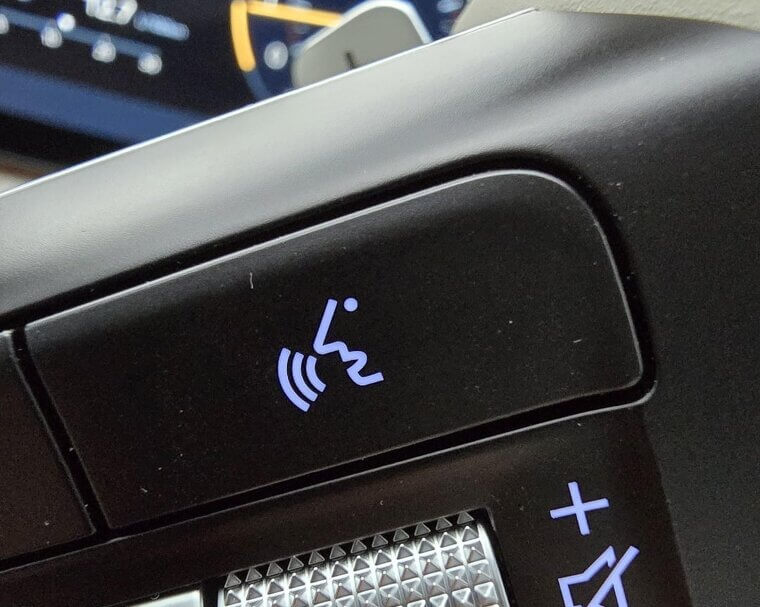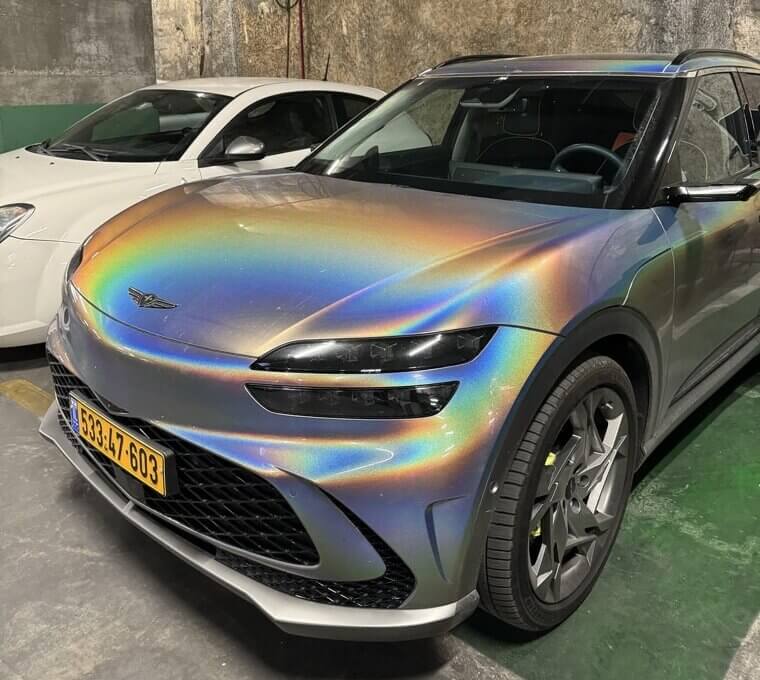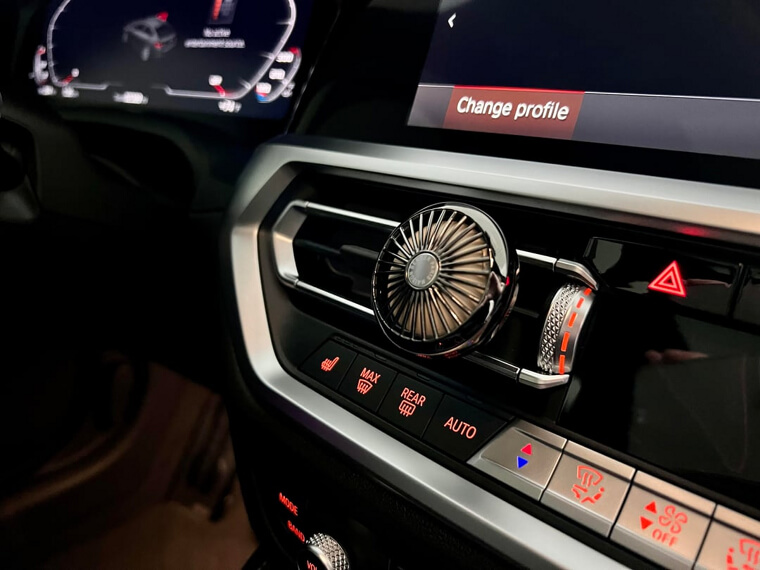Overly Large Wheels
Bigger wheels may look stylish, but they usually hurt your car’s performance and ride comfort. Larger wheels require thinner tires, which provide less cushioning against potholes and bumps. This makes the ride harsher and can increase the risk of damage to the wheel rims. Replacement tires for oversized wheels are also significantly more expensive. While they may improve cornering slightly, the difference is rarely noticeable for everyday driving. Smaller wheels with properly sized tires offer better durability, quieter rides, and lower repair costs. If appearance matters most, consider aftermarket wheels later instead of paying a premium at the dealership. Choosing practical wheel sizes keeps maintenance simple and protects your wallet from unnecessary tire replacement expenses.
Gesture Controls
Gesture control technology allows you to change settings with hand movements, but it is more gimmick than useful. Drivers wave their hands to adjust volume or skip tracks, yet the system often misreads the motion or fails entirely in bright light. These systems add unnecessary complexity and distract drivers more than traditional buttons or steering-wheel controls. They also increase the price of infotainment packages without adding real convenience. Many owners stop using the feature after a few weeks because it feels awkward or inconsistent. Car designers include gesture controls to showcase technology, but in daily driving, they serve little purpose. Keeping both hands on the wheel and using physical controls remains the safer and simpler option.
Premium Sound Systems
Automakers frequently promote upgraded sound systems with big brand names, but most drivers notice little difference between the standard setup and the premium one. Unless you are an audiophile who values perfect acoustics, paying extra for branded speakers and amplifiers rarely makes sense. The cabin of a car is not an ideal listening environment, so even expensive systems are limited by space and road noise. In many cases, the upgrade is bundled with other unnecessary features, inflating the overall price. Factory systems are also harder to repair or replace later if something fails. For far less money, you can enhance sound quality with aftermarket speakers or simply use higher-quality audio streaming services. Unless you spend long hours parked and listening to music, skip the premium sound package and focus on features that improve comfort or safety instead.
Built-In Navigation Systems
Car manufacturers still charge hundreds or even thousands of dollars for built-in navigation, even though smartphones now outperform most of them. Modern phone apps update maps automatically, provide live traffic data, and integrate seamlessly with voice assistants. In contrast, built-in systems often require paid updates or subscription fees just to stay current. Touchscreen interfaces in cars can also be slow and less intuitive than Apple CarPlay or Android Auto. Since almost every new vehicle supports phone connectivity, paying extra for built-in navigation is unnecessary. It adds cost without improving convenience. The money you save could easily go toward better safety features or all-weather tires that actually affect how the car drives. Unless you frequently travel through areas without mobile service, using your phone for navigation makes far more sense.
Extended Warranties
Dealers often push extended warranties as a way to protect your investment, but in most cases, they offer little real value. Many factory warranties already cover major issues for several years, and modern vehicles are more reliable than ever. Extended coverage usually excludes wear items like brakes and tires, which are the most common repair expenses. These plans can cost thousands of dollars and include deductibles that make small repairs not worth claiming. Unless you drive high mileage or plan to keep your car for more than a decade, an extended warranty often ends up unused. The dealer profits more than the buyer. A better option is to set aside an emergency fund for unexpected repairs. That way, you maintain flexibility instead of being locked into limited coverage with strict conditions.
Rear Seat Entertainment Systems
Rear seat entertainment systems look appealing for families, but they are often outdated before the car leaves the lot. Built-in screens and DVD players cost thousands of dollars, yet most passengers now prefer tablets or phones that can stream unlimited content. Built-in systems also require expensive dealer repairs when the screens malfunction. They often lack app compatibility and need separate headphones that can easily break or get lost. In contrast, portable devices offer more flexibility and are far cheaper to replace. Parents can easily mount tablets on headrests and remove them when not in use. Paying extra for factory entertainment systems locks you into old technology that ages poorly. If you want to keep passengers entertained, it is smarter to invest in reliable mobile devices and use your car’s USB ports or power outlets to keep them charged.
Sunroofs and Panoramic Roofs
Sunroofs and panoramic glass roofs add light to the cabin, but they come with downsides many buyers overlook. They increase the vehicle’s weight, which can reduce fuel economy and raise the car’s center of gravity. More importantly, they are prone to leaks, rattles, and mechanical issues as the car ages. Replacing or repairing the glass and seals can cost thousands of dollars, and even minor wind noise becomes irritating on long drives. During summer, panoramic roofs trap heat, forcing the air conditioner to work harder. They also reduce headroom, which tall passengers quickly notice. While they look impressive in brochures, most drivers rarely use them after the novelty fades. Choosing a model with a solid roof instead can save money and prevent potential maintenance headaches in the future.
Built-In Wi-Fi Hotspots
Many new cars advertise built-in Wi-Fi hotspots, but they require a separate data plan to function. That means another monthly bill on top of your regular mobile service. Since nearly every smartphone can share its connection through a personal hotspot, paying extra for a built-in version offers little benefit. In addition, these systems often use weaker antennas and slower networks than modern phones. They are also tied to the vehicle’s software, making updates more complicated. Unless you constantly travel with multiple passengers who need stable connections, this feature is unnecessary. Relying on your mobile device saves money and provides better flexibility. Car manufacturers include this option mainly for marketing appeal rather than practicality.
Heated Rear Seats
Heated rear seats sound luxurious, but they are rarely used. In most households, only the driver and front passenger benefit from heated seating on a regular basis. Rear passengers might appreciate the warmth occasionally, but that does not justify the high cost. In addition, the heating elements in rear seats are more prone to wear since they are often folded or used for cargo. Repairing them can be expensive and inconvenient. Unless you frequently transport passengers in cold climates, this feature offers little value. Most vehicles already have strong climate control systems that warm the cabin quickly. Spending extra for heated rear seats adds complexity and cost to future maintenance. For most buyers, it is simply an unnecessary luxury.
Automatic Parking Systems
Automatic parking systems sound futuristic, but many drivers find them slow, awkward, and unreliable. These systems use sensors and cameras to steer the car into tight spaces, yet they often misjudge angles or require multiple attempts. Drivers end up intervening before the system finishes, defeating the purpose. The technology also adds expensive hardware that can fail or require recalibration after minor collisions. Repairs for sensors and cameras can be costly. With practice, most people can park faster and more accurately on their own. Unless you live in a city where parallel parking is extremely difficult, skip this upgrade. Backup cameras and parking sensors are sufficient for most drivers and cost less to maintain.
Lane Keeping Assistance
Lane keeping systems can help prevent drifting, but the technology is far from perfect. Sensors can misinterpret faded lane markings, construction zones, or bad weather conditions. This can cause the steering wheel to jerk unexpectedly or fail to respond when needed. Drivers often find the constant corrections irritating and turn the feature off after a few drives. Since it adds cost to the safety package, it is worth considering whether it truly benefits you. Vehicles with clear lane departure alerts provide similar warnings without taking control of the wheel. Until the technology becomes more consistent, paying extra for lane keeping assistance is not always a smart investment.
Ambient Interior Lighting Packages
Color-changing interior lighting looks stylish in promotional photos, but it contributes little to comfort or visibility. Once the novelty wears off, most drivers pick one color and never change it again. The system also adds wiring and bulbs that can malfunction over time, increasing repair costs. Some lighting packages can even be distracting at night if the colors reflect on windows or mirrors. While subtle lighting can make the cabin look upscale, it is rarely worth the premium price dealerships charge. If you want mood lighting, aftermarket LED kits can achieve the same effect for a fraction of the cost. Spending money on functional upgrades like improved visibility or driver-assist features makes much more sense than investing in glowing lights.
Built-In Voice Assistants
Automakers have introduced their own voice assistants to compete with Apple’s Siri and Google Assistant, but these systems are often slower and less accurate. They rely on limited commands and can misunderstand simple requests, causing frustration. Many drivers end up reverting to their smartphones for navigation or messages. Built-in assistants also require periodic software updates that may cost extra after the warranty period. Since most cars now support smartphone integration, using your phone’s voice assistant is faster, more reliable, and free. The car’s built-in version adds complexity without improving functionality. Unless the system includes offline capabilities that your phone lacks, there is no reason to pay more for this feature.
High-End Paint Finishes
Metallic and pearlescent paints look beautiful, but they add significant cost and require delicate care. Minor scratches or chips are much more noticeable on premium finishes, and matching the color during repair can be expensive. These paints also fade faster when exposed to sunlight without proper maintenance. Standard colors often provide the same visual appeal at a lower price and are easier to touch up. Dealers promote special paints as a way to personalize a car, but most buyers regret paying extra once they realize how difficult the upkeep is. Choosing a classic, durable color keeps maintenance simple and preserves resale value without the added cost of premium paint.
In-Car Fragrance Systems
Some luxury brands now offer built-in fragrance systems that release scent through the air vents. While it sounds like a pleasant upgrade, it quickly becomes unnecessary. The scent cartridges are expensive and need frequent replacement. Over time, the fragrances can mix with other cabin smells or become overpowering. Passengers with allergies or sensitivities may also find them irritating. A simple air freshener or regular cleaning achieves the same result for far less money. Paying extra for a built-in fragrance system adds maintenance costs without improving comfort or air quality. It is a luxury that looks appealing on paper but rarely justifies its price in real-world driving.

